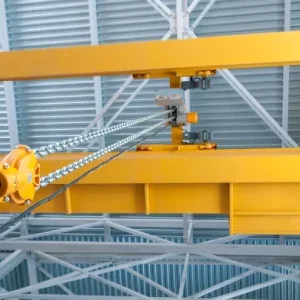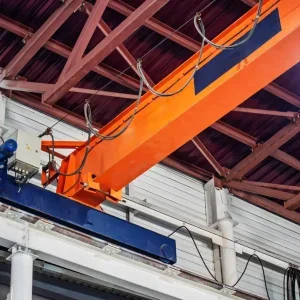The Thelwall Viaduct on the northbound M6 motorway was partially closed to traffic in July 2002, after it was discovered that a roller bearing, which was installed when the viaduct was refurbished in 1996, had split into two.
Initially it was hoped repair work could be carried out quickly but an extensive study of all the support bearings revealed serious problems. After it was realised that all the bearings could fail in the short to medium term, the decision was taken to replace all 136 of them.
The bridge is supported by 35 piers and two abutments, as well as eight supporting beams, which run parallel to each other along the full length of the underside of bridge. The bearings are positioned between the beams and the pier heads to allow thermal expansion and contraction of the beams between summer and winter as well as movement due to traffic loadings.
In order to replace a bearing, it was necessary to jack up the viaduct to allow the old bearing to be removed and a new one installed. This complex operation first required the strengthening of the beam above the bearing so as to prevent it from buckling. Originally for every bearing replacement four stiffening plates and A frames were attached to the relevant beam. However, this became too time consuming and the stiffening plates were replaced with shelf brackets. These were purpose made frames that could be assembled around the bridge beams. They then jacked up these shelf brackets to lift the bridge.
“The stiffening plates and the subsequent shelf brackets were both heavy and the positioning very awkward so Lifting Gear Hire devised a solution for safely and efficiently installing them and eliminated any manual handling,” said Allan Cooke, Lifting Gear Hire, Atherton.
Due to the complicated steelwork around the bearings, Lifting Gear Hire devised a solution using a bespoke runway beam which was used in combination with a hoist and manual chain block. It was not possible, however, to fit this system to the bridge itself and so it was therefore necessary to erect scaffolding around each of the 35 piers and 2 abutments, ranging in height from 11m to 35m.
The runway beam system was then attached to the scaffolding directly underneath the viaducts’ supporting beam. The stiffening plate or shelf bracket could then be lifted from the pier head and tracked into position on the supporting beam.
“We supplied all the necessary hoists and ancillary equipment along with 240 bespoke runways, although we actually tested and installed 380 as it was possible to use some of them on more than one pier head,” Cooke said.
Lifting Gear Hire also devised a solution for lifting the stiffening plates, shelf brackets and bearings onto the pier heads prior to installation. A lift well was created in the scaffolding and a runway beam installed onto the pier head so that it extended out over the hole. An electric hoist was then used to lift the equipment as and when required.
Lifting Gear Hire worked with sister company Lifting Gear Engineering to design, manufacture, erect and test both of these specialised lifting solutions.
“This was a complex lifting application and we were impressed from the very beginning with Lifting Gear Hire and Lifting Gear Engineering’s ability to devise and supply a safe and efficient lifting solution which enabled us to replace all of these bearings ahead of schedule,” said Pete Wilkinson, Project Manager, Nuttall John Martin.
‘They worked in partnership with us and were reliable suppliers who always provided us with the necessary lifting expertise and equipment needed to ensure that the two-year project ran smoothly,’ he added.






